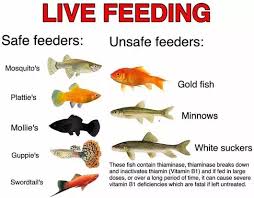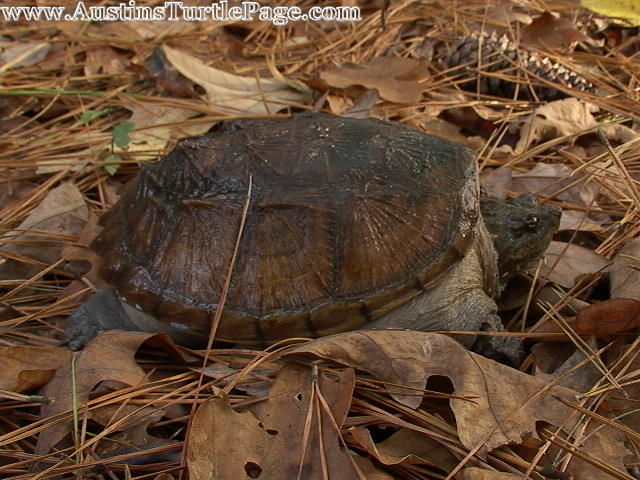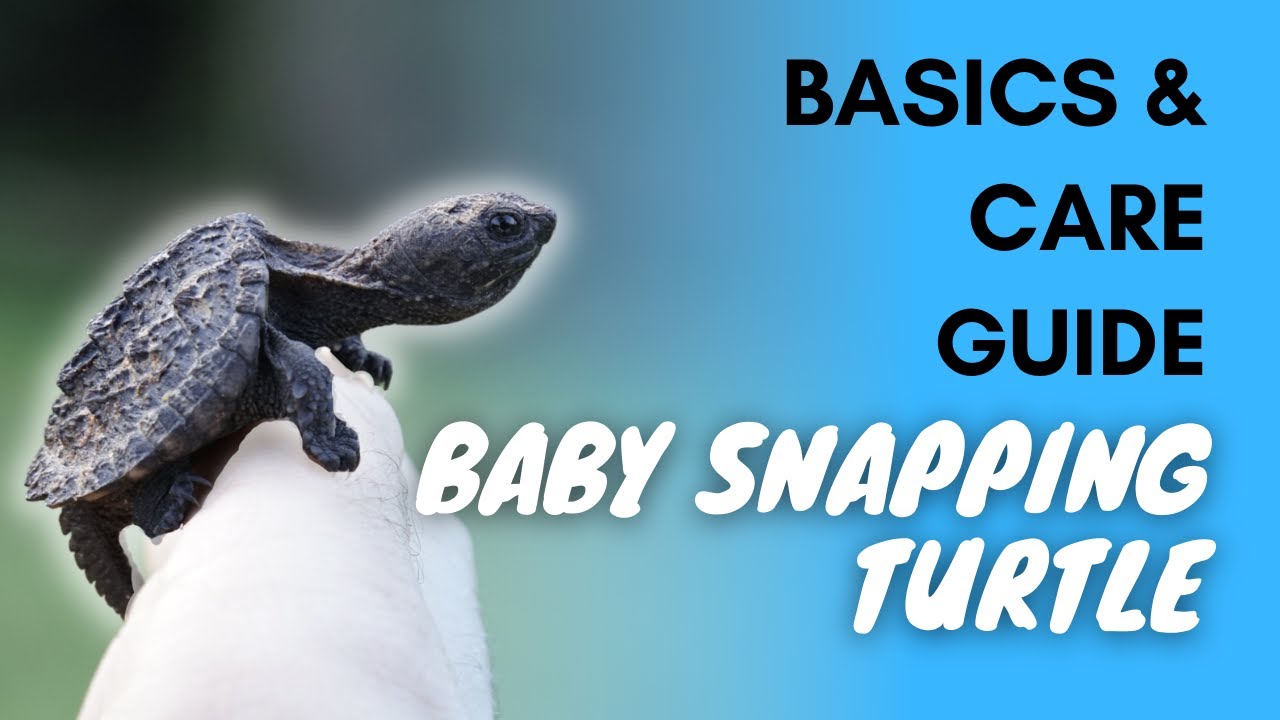To care for a snapping turtle, provide a large tank with clean water, a basking area, and a varied diet. Snapping turtles need a well-maintained habitat to thrive.
Ensuring proper temperature, lighting, and water quality is crucial for their health. Regularly clean the tank and monitor their behavior and appetite to spot any issues early on. With proper care and attention, snapping turtles can live long and healthy lives in captivity.

Credit: www.turtleman.com
Understanding Snapping Turtles
Caring for a snapping turtle involves providing a spacious tank, a basking area, and a balanced diet of live prey and vegetables. It’s crucial to maintain clean water and offer enrichment to keep them healthy and active. Regular health check-ups by a reptile veterinarian are also essential for their well-being.
Understanding Snapping Turtles Physical Characteristics Snapping turtles are known for their rugged appearance, with a large, dark-colored shell and a distinctive hooked beak. Their powerful jaws and long tail make them easily distinguishable from other turtle species. These aquatic reptiles can grow to impressive sizes, with some individuals reaching over 50 pounds in weight. Their rough, ridged shells provide protection from predators and the elements. Habitat and Behavior Snapping turtles are primarily found in freshwater habitats such as ponds, lakes, and slow-moving streams. They are skilled swimmers and spend much of their time submerged, lying in wait for prey. While they are primarily carnivorous, snapping turtles are also known to scavenge for plant material, making them important members of their ecosystems. These turtles are known for their feisty disposition and can be aggressive when threatened, using their powerful jaws to defend themselves. In the wild, snapping turtles have been observed basking in the sun on logs or rocks near the water’s edge. This behavior helps regulate their body temperature and aids in digestion. When kept in captivity, providing a basking area with a heat source is essential for their well-being. Understanding the physical characteristics, habitat, and behavior of snapping turtles is crucial for providing proper care and ensuring their well-being in captivity. By creating an environment that mimics their natural habitat, enthusiasts can help these fascinating reptiles thrive.
Credit: www.austinsturtlepage.com
Creating The Ideal Habitat
To care for a snapping turtle, create an ideal habitat with a mix of land and water areas. Ensure the water is deep enough for swimming and provide ample hiding spots for the turtle to feel secure. Maintain cleanliness and offer a varied diet for optimal health.
Creating the Ideal Habitat for a Snapping Turtle is crucial for its well-being. They need a spacious and secure enclosure to thrive. Here are some essential tips on Enclosure Setup and Water and Land Area Requirements to help you create a suitable habitat for your pet Snapping Turtle.Enclosure Setup
When setting up the enclosure, make sure that it is large enough for the turtle to move around comfortably. The minimum size for an adult Snapping Turtle is 100 gallons, but a larger enclosure is always better. The enclosure should be secure and free from any hazards that may harm your turtle. Ensure that the enclosure has a lid or a screen top to prevent the turtle from escaping and any predators from entering. Place the enclosure in a spot that is away from direct sunlight and drafts, as these can cause temperature fluctuations that can be harmful to your turtle’s health. A good idea is to place it in a room with a constant temperature.Water And Land Area Requirements
Snapping Turtles require both water and land areas in their enclosure. The water area should be deep enough for the turtle to swim and dive and should be at least twice the length of the turtle. Keep the water clean by using a water filter and changing the water regularly. You can also add aquatic plants, rocks, and basking areas to make it more natural and comfortable for your turtle. The land area should be large enough for the turtle to move around and bask. A good rule of thumb is to have a land area that is at least one-third the size of the enclosure. Add rocks, logs, and plants to create a natural-looking habitat. In conclusion, creating the ideal habitat for your Snapping Turtle is crucial for its health and happiness. With these tips, you can provide a safe and comfortable home for your pet.Feeding And Nutrition
Feeding and nutrition play a crucial role in the care of a snapping turtle. Proper diet and feeding schedule are essential for their health and well-being. Here’s everything you need to know about feeding and nutrition for your snapping turtle.
Dietary Needs
Snapping turtles are omnivores, meaning they consume both plant and animal matter. Their diet should consist of a variety of foods to ensure they receive adequate nutrition. A balanced diet for a snapping turtle includes protein-rich foods such as insects, fish, and small mammals, as well as leafy greens, vegetables, and fruits. It’s important to replicate their natural diet as closely as possible to maintain their health.
Feeding Schedule
Establishing a regular feeding schedule is essential for the overall well-being of your snapping turtle. Adult snapping turtles typically require feeding every 2-3 days, while younger turtles may need to be fed daily. Offering a variety of foods during each feeding session ensures that your turtle receives a well-rounded diet. It’s also important to observe their feeding behavior to ensure they are consuming an adequate amount of food.

Credit: pethelpful.com
Health And Wellness
When it comes to the health and wellness of your snapping turtle, it’s essential to be proactive in ensuring its well-being. By understanding common health issues and performing regular health checks, you can help keep your pet turtle healthy and happy.
Common Health Issues
Snapping turtles are hardy creatures, but they can still be susceptible to certain health issues. Some common health problems to watch out for include:
- Shell injuries
- Respiratory infections
- Parasitic infestations
- Vitamin deficiencies
- Obesity
Regular Health Checks
Regular health checks are crucial for maintaining the well-being of your snapping turtle. Keep an eye out for any signs of illness or injury, such as:
- Changes in appetite
- Abnormal behaviors
- Shell abnormalities
- Discharge from the eyes, nose, or mouth
- Weight loss or gain
Handling And Interaction
When it comes to caring for a snapping turtle, proper handling and interaction are essential for both the well-being of the turtle and your safety. Safe handling practices and opportunities for bonding with your snapping turtle are key aspects to consider when providing care for these unique reptiles.
Safe Handling Practices
Handling a snapping turtle requires caution and respect for its natural behaviors. It’s crucial to approach the turtle carefully and avoid sudden movements to prevent stress or aggression. Always use both hands to support the turtle’s body, ensuring a secure grip to prevent it from slipping or feeling insecure. Remember that snapping turtles have powerful jaws, so avoid handling the head or tail to prevent injuries to both the turtle and yourself. If you are unsure about handling your snapping turtle, seek guidance from a professional or experienced reptile handler.
Bonding With Your Snapping Turtle
Bonding with your snapping turtle can create a positive and enriching experience for both you and your pet. Spend time observing your turtle’s behavior and providing a comfortable and stimulating environment. Offer a variety of foods, such as live prey, aquatic plants, and commercial turtle pellets, to ensure a balanced diet and encourage interaction during feeding time. Additionally, providing a spacious and enriched habitat with hiding spots, basking areas, and clean water can promote natural behaviors and trust between you and your snapping turtle.
Reproduction And Offspring
Reproduction and offspring are crucial aspects of caring for snapping turtles. Understanding their mating behavior and providing proper care for hatchlings is essential for the well-being of these fascinating creatures.
Mating Behavior
Snapping turtles typically mate in the spring or early summer. During mating, the male turtle will approach the female and attempt to mount her shell. This behavior may appear aggressive, but it is a natural part of the mating process.
Caring For Hatchlings
After mating, female snapping turtles will search for a suitable location to lay their eggs, often choosing sandy or loose soil near bodies of water. Once the eggs are laid, it is crucial to ensure their safety by protecting them from predators and extreme temperatures. It’s important to monitor the incubation site and provide a safe environment for the eggs to hatch.
Conservation Efforts
Learn how to care for snapping turtles through conservation efforts. Ensure proper habitat, avoid handling, and support protective measures. Engage in education and awareness to safeguard these unique reptiles.
Threats To Snapping Turtles
Snapping turtles are facing numerous threats to their survival, including habitat loss, pollution, and hunting. These turtles are often hunted for their meat, which is considered a delicacy in some cultures. Other threats to snapping turtles include accidental capture in fishing gear, collisions with boats, and the destruction of their nesting sites.Ways To Contribute To Conservation
Conservation efforts are crucial to protecting the snapping turtle population. There are several ways you can contribute to these efforts, including:- Reduce your use of plastics: Plastics can end up in the water and harm turtles. Reduce your use of plastic products and recycle whenever possible.
- Support conservation organizations: Many organizations work to protect snapping turtles and their habitat. Consider donating to or volunteering with these organizations.
- Be cautious around turtles: If you encounter a snapping turtle in the wild, give it plenty of space. Do not try to pick it up or disturb it.
- Report turtle sightings: If you see a snapping turtle in the wild, report the sighting to your local conservation authorities. This information can help conservationists better understand the turtle population and make informed decisions about conservation efforts.
- Reduce your carbon footprint: Climate change can have a significant impact on the habitats of snapping turtles. Reduce your carbon footprint by driving less, using energy-efficient appliances, and reducing your overall energy consumption.
Conclusion
Taking care of a snapping turtle requires dedication, knowledge, and patience. By providing proper habitat, diet, and handling, you can ensure the well-being of these unique creatures. Remember to always prioritize their health and safety to create a fulfilling and rewarding relationship with your snapping turtle companion.






Leave a Reply